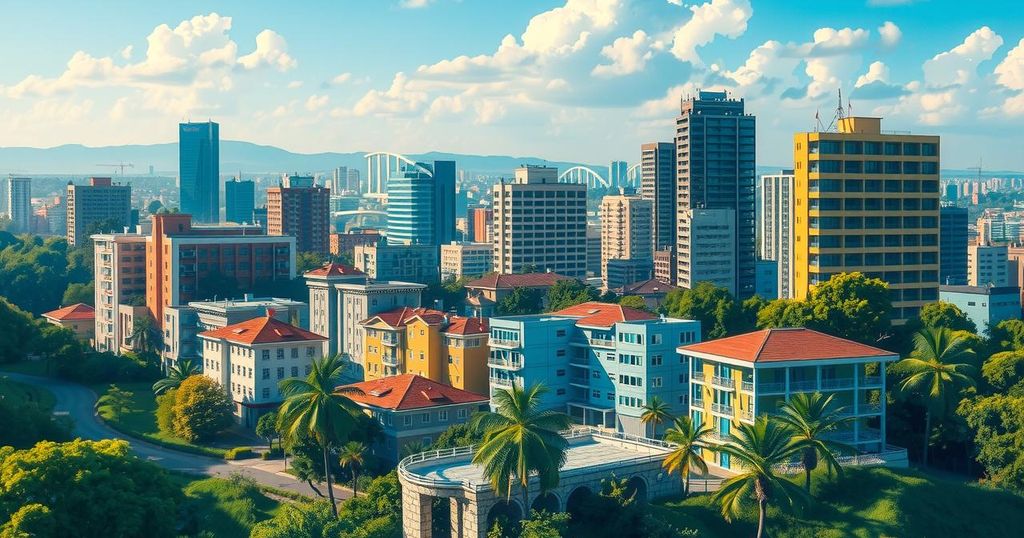Analysis of Inflation Rates in Nigeria: Top 10 Most Expensive States as of February 2025

As of February 2025, Nigeria’s inflation rate decreased to 23.18%, influenced by moderating food prices. Noteworthy high inflation rates are reported in Edo (33.6%) and Sokoto (30.2%), highlighting escalating living costs across states. The trend emphasizes the critical role of food inflation in economic pressures, necessitating careful observation of ongoing price developments.
In February 2025, Nigeria reported a decline in its headline inflation rate to 23.18%, a drop from 24.48% in January and significantly down from 31.70% in February 2024, according to the National Bureau of Statistics (NBS). This decrease indicates a slowing pace of price increases across various sectors, primarily driven by moderating food inflation and reduced cost pressures in certain consumer categories.
The NBS identified that food and non-alcoholic beverages were the principal contributors to inflation, accounting for 9.28% of the headline rate year-on-year. Other factors included accommodation services, transportation, utilities, and education services. Food prices notably contributed 0.82% on a month-on-month basis, followed by accommodation at 0.26% and transport at 0.22%.
Urban inflation reached 25.15% in February 2025, down from 33.66% in February 2024, while rural inflation stood at 19.89%, reflecting a decline from 29.99% the previous year. Monthly increases suggest ongoing price rises, but at a tempered rate, with urban inflation at 2.40% and rural inflation at 1.16%.
Food inflation specifically decreased to 23.51% year-on-year in February 2025, a significant drop from 37.92% the previous year. This reduction was, in part, attributed to a base year change for measurement. Month-on-month, food inflation showed a rise of 1.67%, indicating slower price escalation. Key staples like yam, potatoes, soybeans, and maize experienced price declines.
Core inflation, excluding volatile categories, was recorded at 23.01% year-on-year, down from 25.13% in February 2024, with a monthly increase of 2.52%, reflecting continued moderate price rises in non-food and non-energy items. Amid these persistent inflationary pressures, households face rising costs.
The following are the 10 most expensive states in Nigeria as of February 2025:
10. Ebonyi – Inflation rate: 25.1%, Food inflation: 28.1%; month-on month food inflation rose only 0.5%, indicating stabilization.
9. Nasarawa – Inflation rate: 25.3%, with food prices increasing by 33.5% annually and a monthly rise of 15.3% indicating a notable cost-of-living increase.
8. Ogun – Inflation rate: 25.8%, food inflation stands at 23.0%, suggesting other goods exert more influence over the cost of living.
7. Gombe – Inflation rate: 26.5%, with food prices rising 28.5% year-on-year; month-on-month food inflation rose 4.2%.
6. Abia – Inflation rate: 29.2%, food prices surged by 31.9% annually, though moderate monthly increases were observed.
5. Zamfara – Inflation rate: 29.3%, food inflation at 28.2% with monthly food inflation rising 3.1%.
4. Imo – Inflation rate: 30.1%, food inflation at 29.0% indicating significant contributions from both food and other sectors.
3. Sokoto – Inflation rate: 30.2%, food inflation at 38.3%, with significant monthly rises indicating severe inflationary pressure.
2. Enugu – Inflation rate: 30.7%, food inflation at 31.6%, showing steady increases across sectors.
1. Edo – Highest inflation rate at 33.6%, food inflation at 35.1%, indicative of the most pronounced increase in the cost of living among states.
In conclusion, the inflation rate in Nigeria has shown a noteworthy decline in February 2025, though considerable challenges remain due to continued price increases in essential goods. Notably, states such as Edo and Sokoto are experiencing the highest inflation rates, driven primarily by escalating food prices. This analysis underscores the importance of ongoing monitoring of inflation dynamics to understand their impact on the cost of living across various Nigerian states.
Original Source: nairametrics.com








